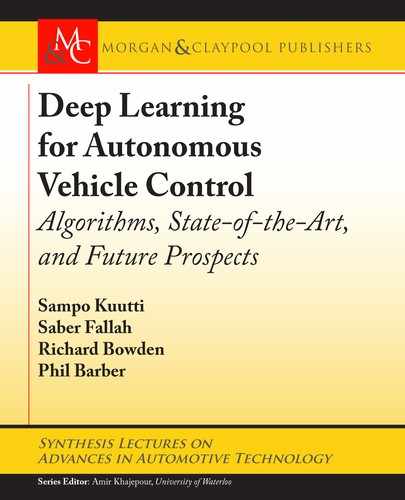
xiii
Preface
e introduction of new digital technology into the automotive industry has always raised anx-
ieties. From the concerns over the use of floating point arithmetic in the 1980s, through the
scepticism over the adoption of the C-language for safety-related control systems, to the in-
troduction of graphical methods and auto coding of real-time algorithms. We now comfortably
accept the implementation of nonlinear rules and behaviors for vehicle control. ese non-linear
behaviors can be considered the precursors to intelligent algorithms, exemplified by the now
mature tracking and distance keeping offered by Adaptive Intelligent Cruise Control systems
initially researched in the 1990s. Current developments in Artificial Intelligence continue this
progress towards more natural and capable vehicle control systems, but quite rightly need a
complete understanding of the complex safety issues involved.
is book aims to present a view of current technological capabilities in autonomous ve-
hicle control through deep learning methods, discussing algorithms and techniques used, short-
comings of current systems, research challenges, and safety perspectives. e target audience of
the book includes graduate students interested in autonomous vehicles, automotive engineers
and researchers who want to learn how these new tools can be applied to the next generation of
intelligent transportation systems, as well as deep learning practitioners who aim to apply their
skills to self-driving cars.
To this aim, the book starts with an introduction to autonomous vehicle research and the
motivation behind this technology in Chapter 1. Chapter 2 lays the foundation of deep learning
concepts, which will be relevant to later chapters. is chapter is also intended as a general
introduction to deep learning, for those readers who are less familiar with this field. e review
of early concepts and state-of-the-art deep learning algorithms for autonomous vehicle control
are given in Chapter 3. e challenges related to safety validation of these black box systems are
discussed further in Chapter 4. Finally, conclusions and future trends are outlined in Chapter 5.
e research on which this book is based on was carried out at the Connected and Au-
tonomous Vehicles Lab (CAV-LAB) at University of Surrey, together in partnership with the
Centre for Vision, Speech, and Signal Processing (CVSSP) and Department of Computer Sci-
ence at University of Surrey as well as Jaguar Land Rover. e research project was supported
by the UK-EPSRC grant EP/R512217/1 and Jaguar Land Rover.
Sampo Kuutti, Saber Fallah, Richard Bowden, and Phil Barber
January 2019
..................Content has been hidden....................
You can't read the all page of ebook, please click here login for view all page.
